you’ve ever walked through a busy warehouse or packaging floor, you know how quickly boxes can pile up. The way those boxes are stacked and secured on a pallet isn’t just about neatness — it directly impacts safety, efficiency, and product protection. Poorly palletized loads topple in transit, waste labor hours, and cause costly damage. Well-executed palletizing, on the other hand, keeps supply chains moving smoothly.
In this guide, we’ll break down how to palletize boxes correctly, compare stacking techniques, cover safety standards, and show where an automated box palletising machine makes sense.
TL;DR (Key Takeaways):
- Start Strong → Prep boxes (filled, sealed, no voids), align edges, and keep heavy cartons at the base.
- Stack Smart → Use column stacking for strength, brick/interlocking for stability, or hybrid for both. Avoid pyramid stacks.
- Secure Loads → Anchor with stretch wrap, add strapping or corner protectors, and never skip wrapping the pallet base.
- Choose the Right Pallet → Standard 48x40 wood for cost, plastic for hygiene and consistency; match pallet type to load and industry needs.
- Scale with Automation → Manual works for low volume; semi-auto, full-auto, or robotic palletizers deliver speed, consistency, and labor savings at scale.
How to Palletize Boxes Effectively
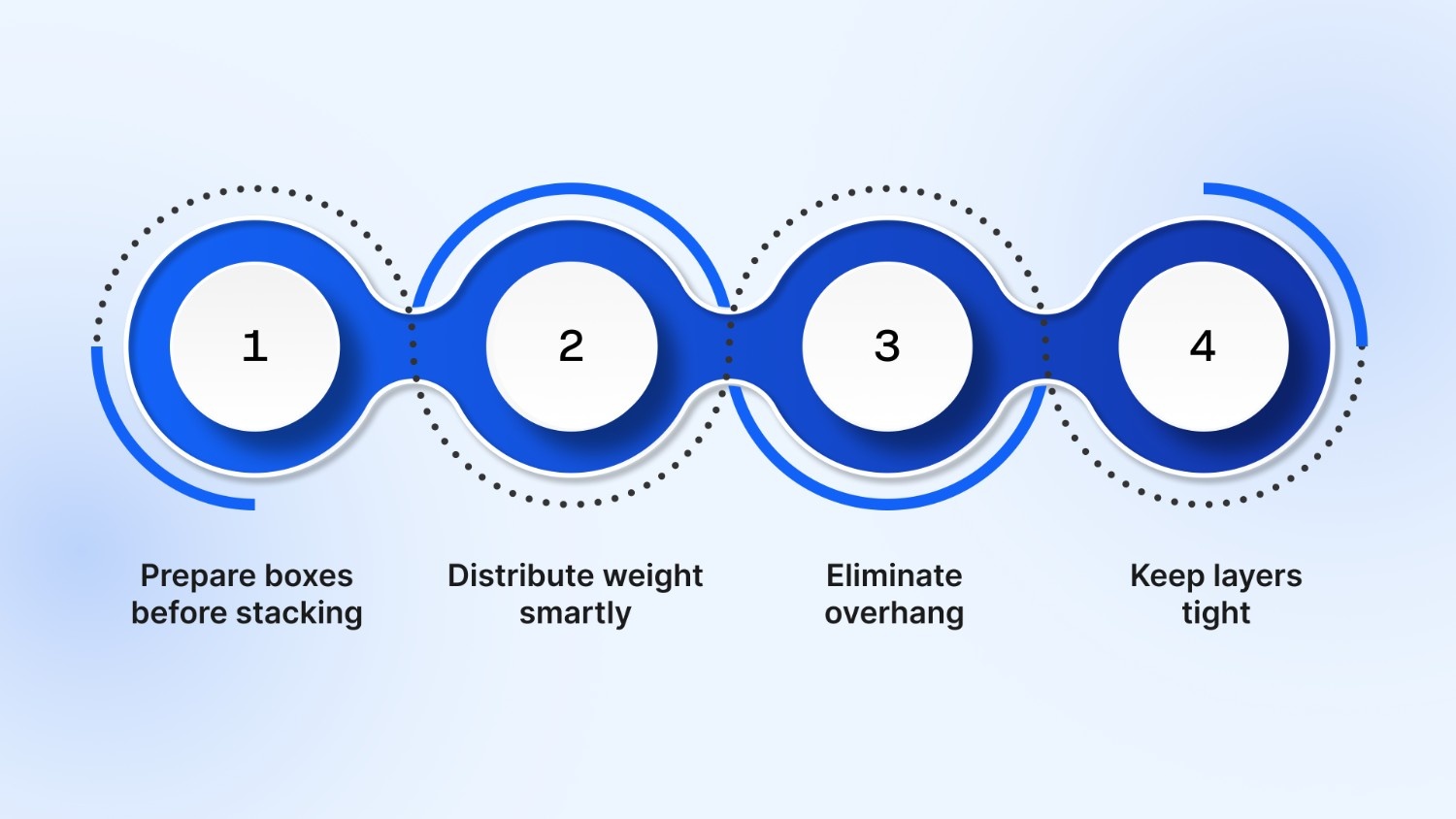
At its core, palletizing boxes means arranging cartons on a pallet so they stay stable during handling, storage, and transport. Done well, it reduces product damage and improves worker safety.
Here are the fundamentals every operator or packaging engineer should follow:
- Prepare boxes before stacking. Make sure cartons are filled properly, with voids minimized. Under-filled boxes collapse when stacked, weakening the whole load. Reinforcing corners with inserts or protective packaging materials adds strength.
For durability, start with the right carton sealing materials—see our guide to the best packing tape for boxes and sealing.
- Distribute weight smartly. Place the heaviest cartons on the bottom layer, then gradually lighter ones on top. This reduces compression damage and improves load stability.
- Eliminate overhang. Boxes that hang over the edge of the pallet lose up to 30% of their strength and are more likely to shift or be crushed. Keep cartons aligned with pallet edges.
- Keep layers tight. Small gaps between boxes multiply as layers go up, creating unstable stacks. Push cartons snugly together.
Think of this step as building a foundation. Without solid box prep and weight distribution, even the best wrapping or strapping later won’t save a weak load.
For best results, pair palletizing with reliable upstream equipment like case erectors and case sealers, which ensure cartons are consistently formed and sealed before stacking.
Box Stacking Techniques for Stability
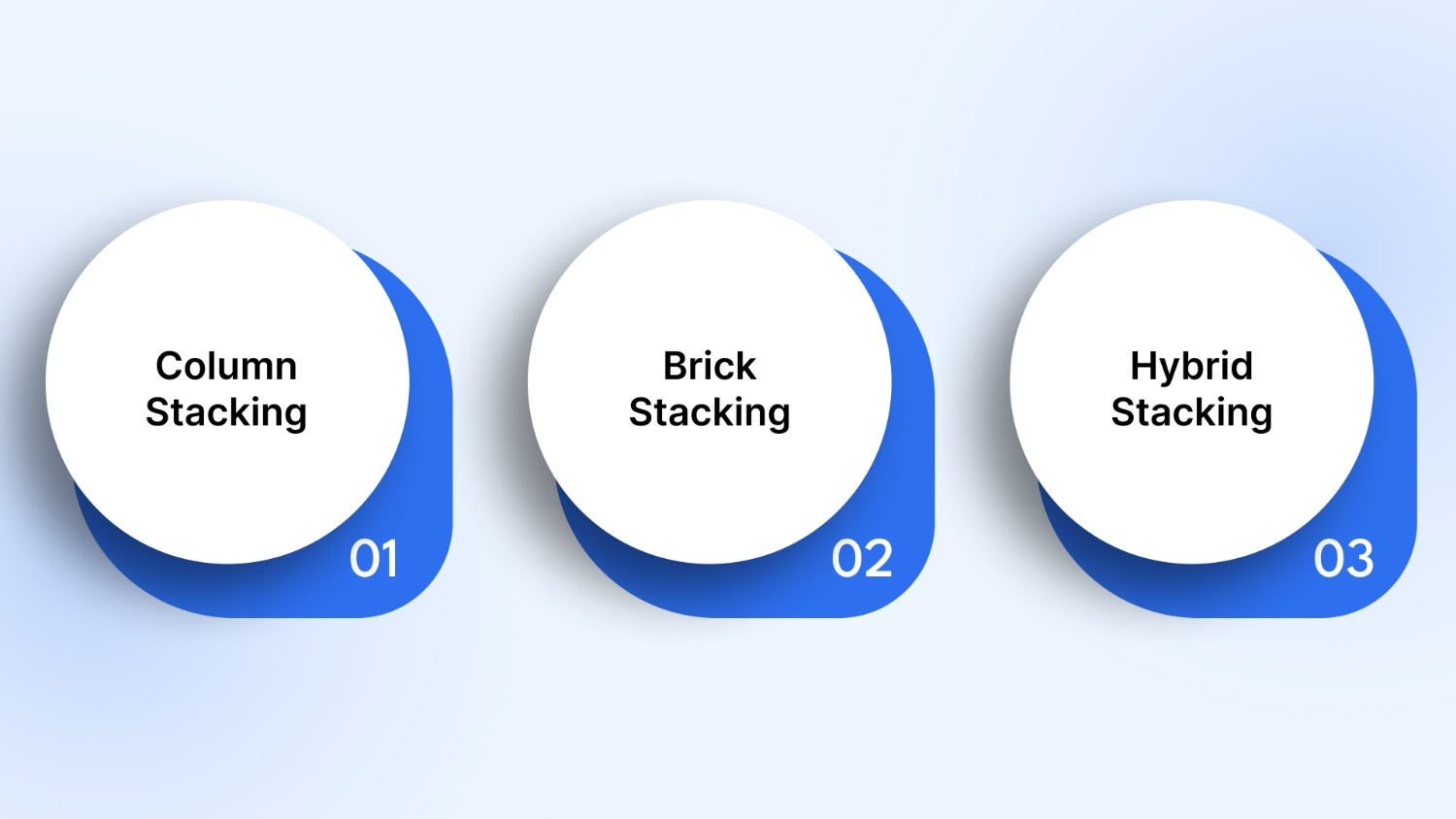
The way cartons are stacked on the pallet matters just as much as the boxes themselves. Two main patterns dominate palletizing:
Column Stacking
- How it works: Each box is stacked directly above the one below it, creating vertical columns.
- Advantages: Maximum strength; supports heavy loads well.
- Drawbacks: Lower resistance to side-to-side shifting.
Brick (Interlocking) Stacking
- How it works: Each layer is offset, like bricks in a wall.
- Advantages: Great lateral stability; reduces shifting in transit.
- Drawbacks: Slightly reduces stacking strength compared to column.
Hybrid Stacking
- Best of both worlds: Many warehouses use a hybrid—brick for the bottom layers (lateral stability) and column for the top (vertical strength).
Pro tip: Avoid pyramid-style stacking (where each layer gets smaller). It wastes pallet space, reduces load stability, and complicates wrapping. Instead, use slip sheets or tier sheets between layers if you need extra grip or separation.
How to Secure Palletized Boxes During Transport

Even the best-stacked boxes won’t hold up if the load isn’t properly secured. A secure pallet keeps cartons tight during forklift moves, long-haul trucking, or last-mile delivery.
Common securing methods:
- Strapping. Steel strapping is the most durable option, typically used for heavy industrial products. Plastic (polyester or polypropylene) strapping is lighter, safer for operators, and works well for most cartons.
- Stretch wrap. Stretch film is the go-to for most box palletising applications. Applied with stretch wrap equipment, it provides consistent containment force around the load. Adding corner protectors reduces film punctures and keeps pressure even.
Choosing the right film strength matters—see our guide to stretch wrap gauges. - Shrink wrap. Less common but useful for certain applications where full load coverage is needed.
Mistakes to avoid:
- Wrapping too loosely or unevenly — creates gaps that allow boxes to shift.
- Overwrapping — wastes film, increases costs, and can even crush weaker cartons.
- Ignoring the base — the first wrap layer should anchor firmly around the pallet deck.
Choosing the Right Pallet Type for Box Palletising
The pallet itself is just as important as how boxes are stacked. The wrong choice can undermine the stability of the load.
Wood vs. plastic pallets
- Wood pallets: Affordable and widely available. Strong enough for most applications but can splinter, harbor bacteria, or vary in size/quality.
- Plastic pallets: Higher upfront cost but consistent in dimensions, easier to sanitize, and better for hygienic industries like food & beverage or pharmaceuticals.
Sizing & standardization
- In the U.S., the 48x40-inch wood pallet is the most common standard. Using consistent pallet sizes helps operators palletize boxes more quickly and allows automated equipment to work without adjustment.
- Custom pallets may be necessary for oversized cartons, but they complicate automation and increase costs.
Pro tip: Always match the pallet type to both your product weight and the requirements of your downstream partners (carriers, warehouses, or retailers). Inconsistent pallet sizes can trigger rework fees and slow down the supply chain.
Safety and Compliance Considerations for Palletizing Boxes
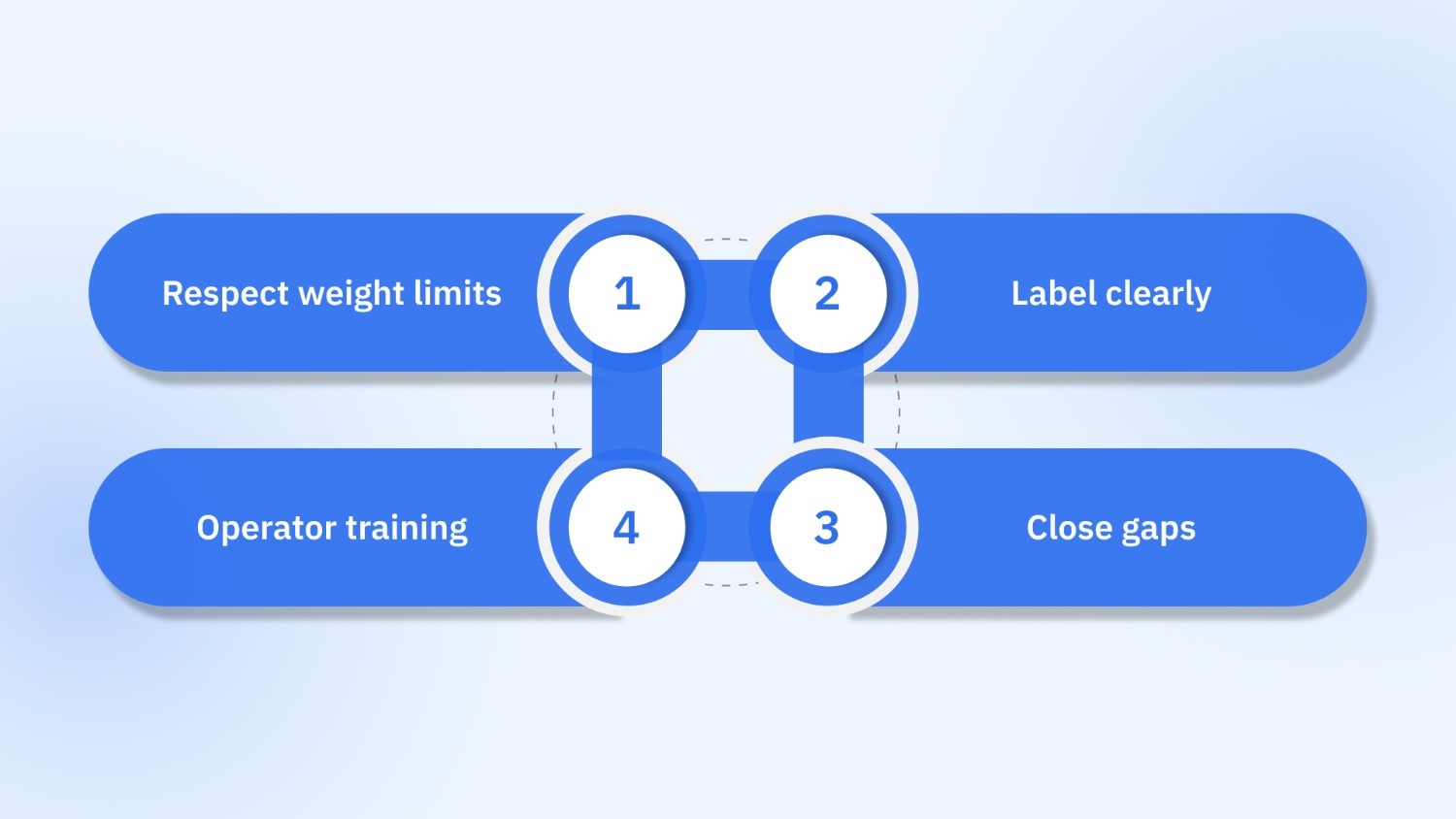
Palletizing boxes isn’t just about efficiency—it’s also a safety issue. Loads that aren’t secure can tip during handling, injuring workers or damaging products. Regulatory agencies like OSHA provide clear guidance on material handling practices that every operation should follow.
Key safety practices:
- Respect weight limits. Avoid stacking cartons so high that visibility is blocked or the load becomes top-heavy. As a rule of thumb, keep palletized loads under 60 inches tall unless your equipment and carriers allow more.
- Label clearly. Every pallet should include shipment details, weight, and handling instructions. This ensures carriers and warehouse teams treat the load correctly.
- Close gaps. Wide spaces between cartons reduce stability and can cause shifting. Proper stacking patterns (column or brick) keep the load tight and stable.
- Operator training. Ensure forklift and pallet jack operators know how to handle palletized loads without sudden stops or sharp turns that could destabilize the stack.
Compliance isn’t just about avoiding fines—it’s about protecting workers and minimizing costly product loss.
For more guidance, check out John Maye’s blog on preventive maintenance and workplace safety tips.
Automated Palletizing Systems
For many operations, manual palletizing reaches its limits quickly. That’s where box palletising machines come in. These systems handle the repetitive, labor-intensive work of stacking cartons, reducing strain on workers and improving throughput.
Types of palletizing systems:
- Semi-automatic palletizers: Operators place cartons, but the machine handles layer formation or load securing. Great for mid-volume operations.
- Fully automatic palletizers: Cartons are fed via conveyors, and the machine builds complete pallets without human intervention.
- Robotic palletizers: Use robotic arms with grippers or suction to handle varied carton sizes. Ideal for operations with mixed SKUs or frequent changeovers.
Benefits of automation:
- Speed: Palletize boxes at a consistent rate far higher than manual labor.
- Consistency: Every load is uniform, reducing shipping damages.
- Labor savings: Reduces repetitive strain and reallocates staff to higher-value tasks.
- Integration: Many palletizers connect directly to upstream equipment like case erectors, sealers, or shrink wrappers—streamlining the entire line.
Rent, lease, or buy?
Not every operation is ready to invest six figures in a fully automated palletizing system. That’s why flexible access matters:
- Short-term rental: Cover seasonal peaks or temporary surges.
- Rent-to-own programs: Test a system before committing capital.
- Leasing: Spread out the cost while benefiting from up-to-date equipment.
This is where John Maye stands out—offering rental fleets and Midwest service coverage that let manufacturers test automation without upfront risk.
Industry Use Cases and Examples of Effective Box Palletising
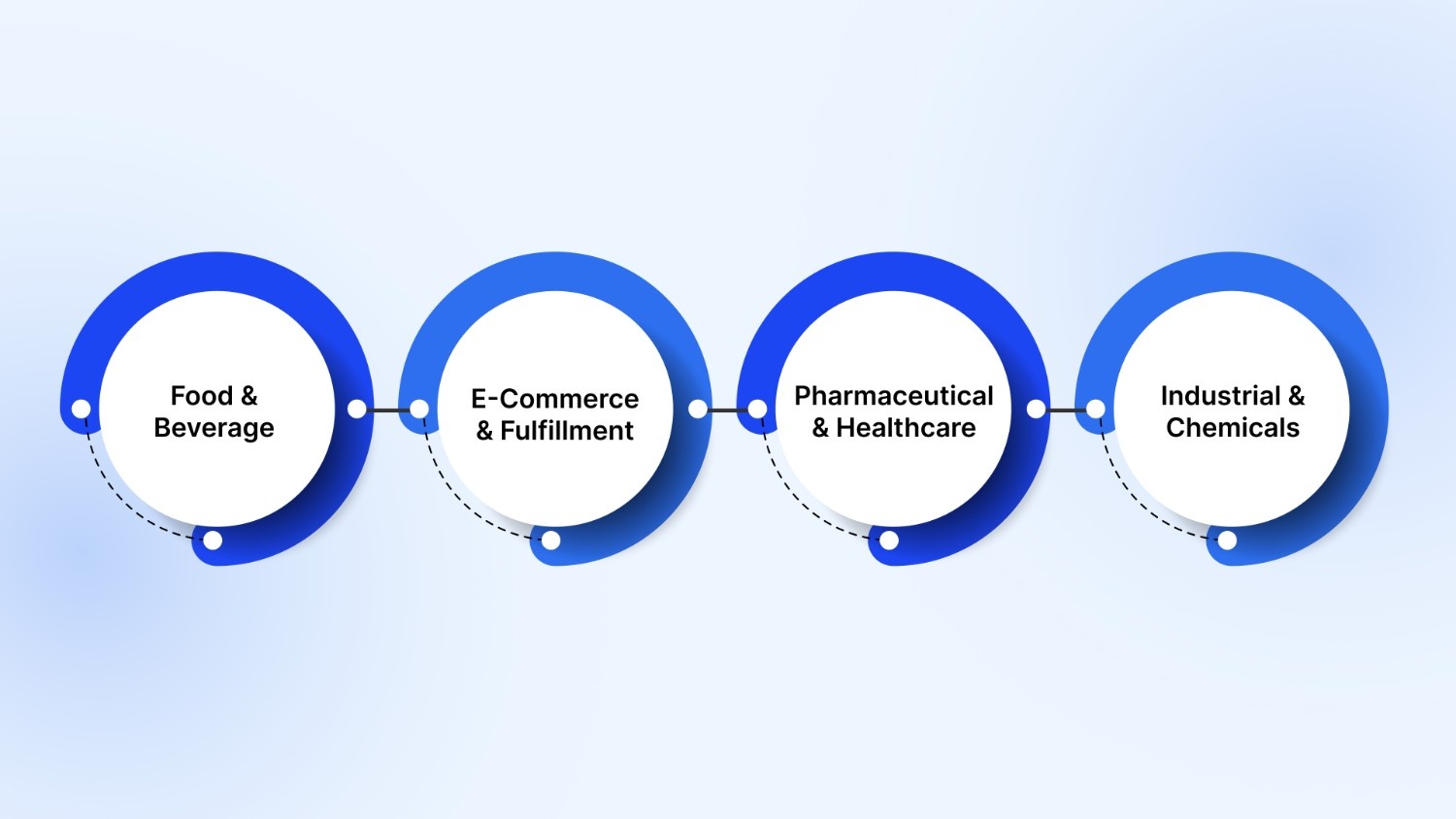
Palletizing boxes looks different across industries, but the goal is always the same: stable, efficient loads that move through the supply chain without issues. Here are a few examples:
- Food & Beverage: Hygiene and consistency are critical. Automated palletizers paired with plastic pallets reduce contamination risks while ensuring repeatable patterns.
- E-commerce & Fulfillment: Box sizes change constantly. Robotic palletizers with vision systems adapt quickly to mixed SKUs, ideal for peak-season surges.
- Pharmaceutical & Healthcare: Carton palletising often requires gentle handling and clear labeling for compliance. Automated solutions help reduce errors and ensure regulatory standards are met.
- Industrial & Chemicals: Heavy, dense cartons benefit from steel or reinforced strapping combined with high-strength pallets. Automation reduces strain on workers handling bulky products.
In each case, the right combination of stacking technique, securing method, and—when appropriate—automation makes the difference between smooth shipping and costly rework.
Conclusion
Palletizing boxes isn’t a “nice-to-have”—it’s the backbone of safe and efficient logistics. Done correctly, it prevents damage, keeps workers safe, and saves money. For many operations, manual palletizing is still the norm. But as volumes rise and labor costs increase, box palletising machines and robotic systems are becoming essential.
Whether you need a better stacking strategy, a machine to palletize boxes automatically, or a rental solution to cover seasonal spikes, John Maye Company provides equipment, supplies, and Midwest service you can count on.
Request a custom consultation to explore palletizing solutions that fit your operation.
FAQs
Q1: What is the best way to palletize boxes of different sizes?
A: Place the heaviest, largest cartons on the bottom, and stack smaller ones toward the top. Use interlocking patterns or slip sheets to stabilize uneven layers.
Q2: How does a box palletising machine work?
A: These machines arrange cartons in a preset pattern and build pallets layer by layer. Robotic palletizers use arms with suction or grippers, while inline systems use conveyors and layer-forming devices.
Q3: What’s the difference between carton palletising and case palletising?
A: Both terms describe stacking corrugated containers on a pallet. “Case palletising” often refers to automated equipment handling sealed cases, while “carton palletising” may cover manual or semi-automatic stacking of boxes.
Q4: Can I rent palletizing equipment instead of buying?
A: Yes. Rentals or rent-to-own programs are ideal for testing automation or covering peak demand without upfront capital. John Maye offers flexible rental options with maintenance included.
Q5: How do I prevent palletized boxes from shifting during transport?
A: Use the right stacking pattern, ensure no overhang, and secure the load with stretch wrap and/or strapping. Corner protectors also add stability.
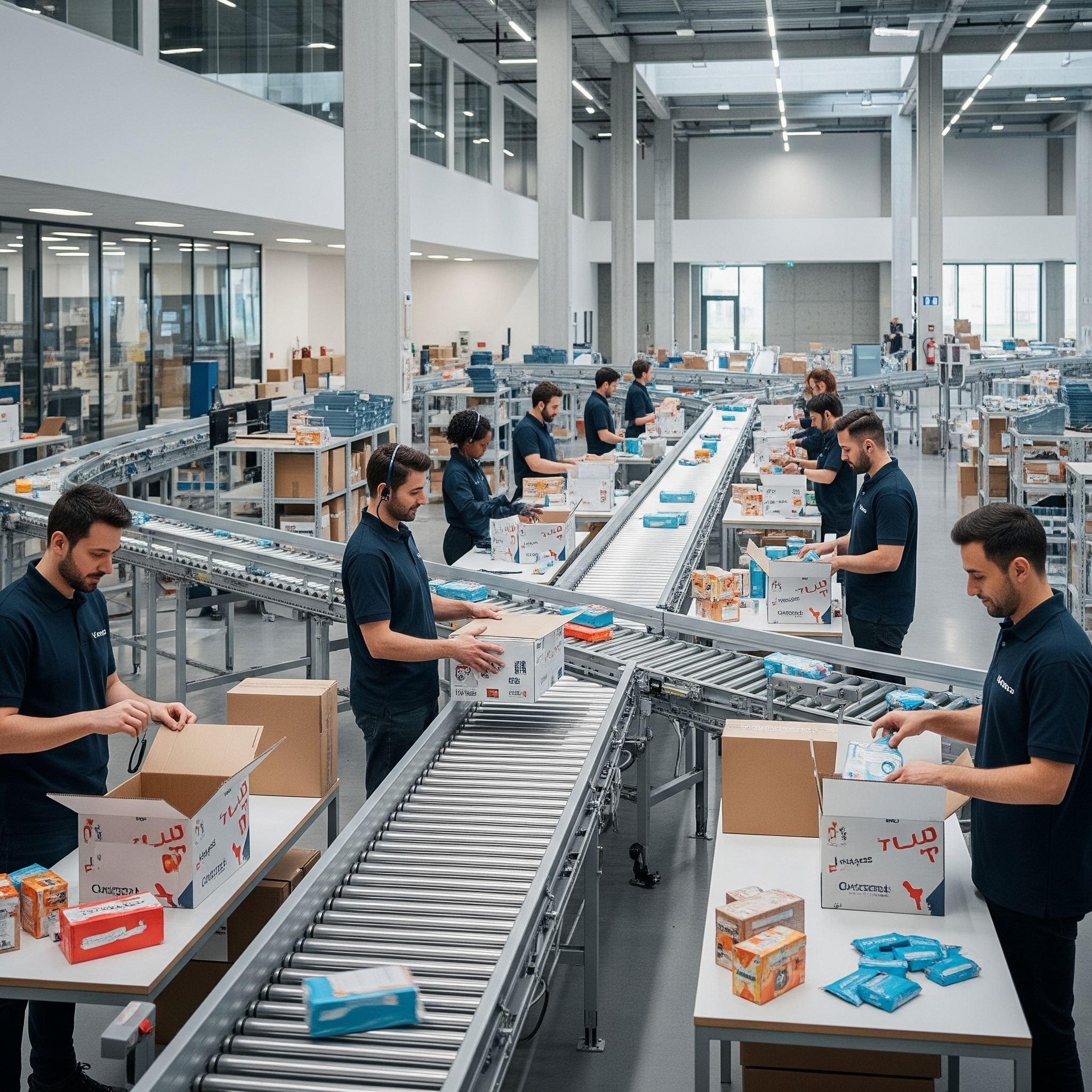
Blogs
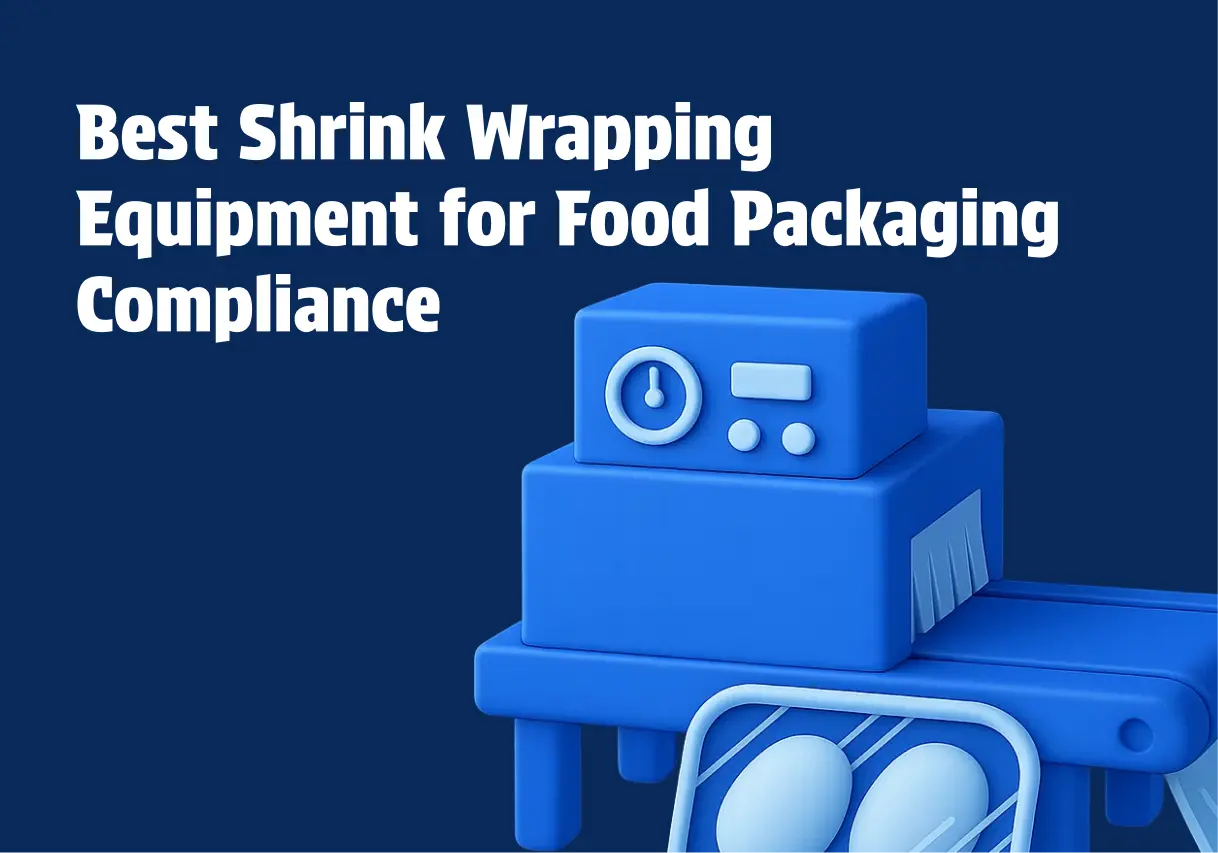
Best Shrink Wrap Machines for Your Business
Discover the best shrink wrapping equipment for food packaging compliance. Conflex offers high automation. Increase efficiency now!

Top Banding Machines for Packaging Solutions
Find top banding machines for small to mid-size packaging lines! Discover flexible automation options and sustainability features. Optimize efficiency today!
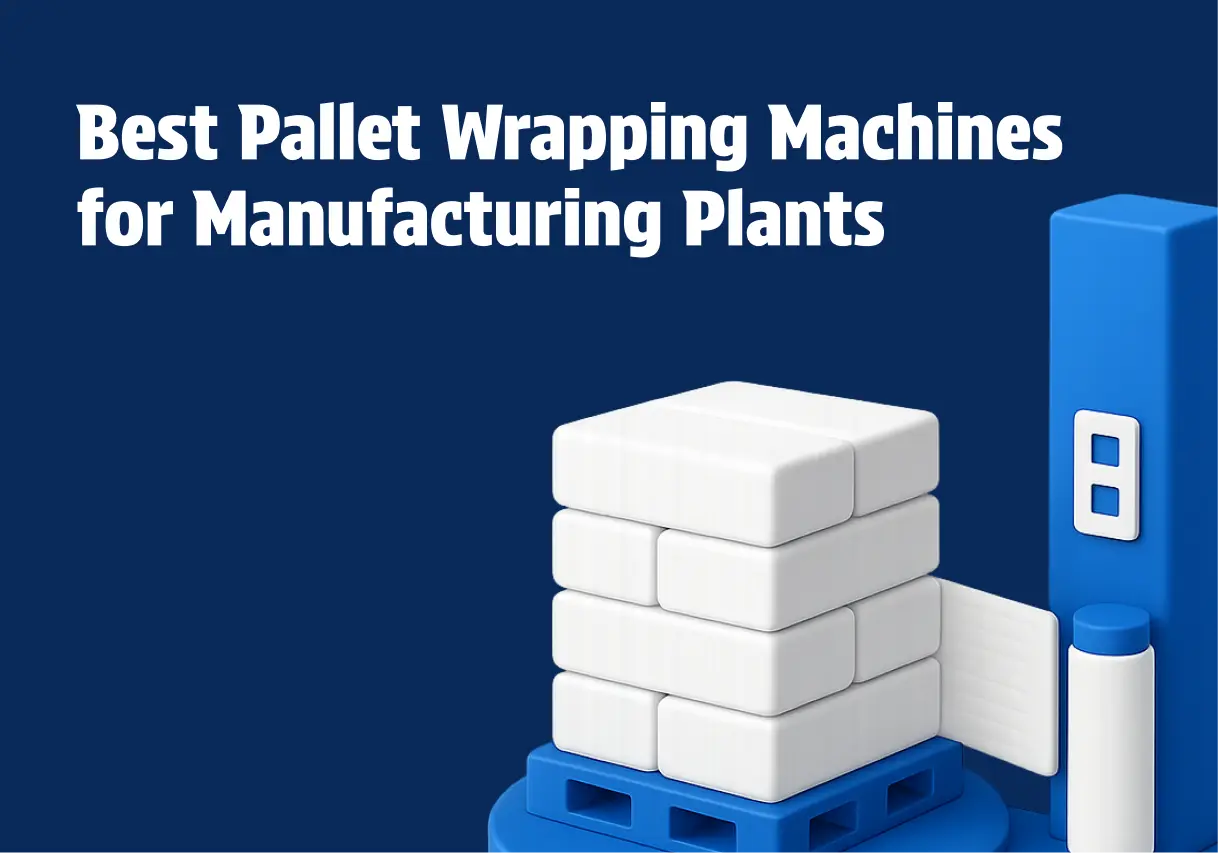
Best Pallet Wrapping Machines for Manufacturing Plants 2025
Explore the best pallet wrapping machines for manufacturing plants in 2025. Learn how to choose, compare key models, and reduce wrapping costs.
